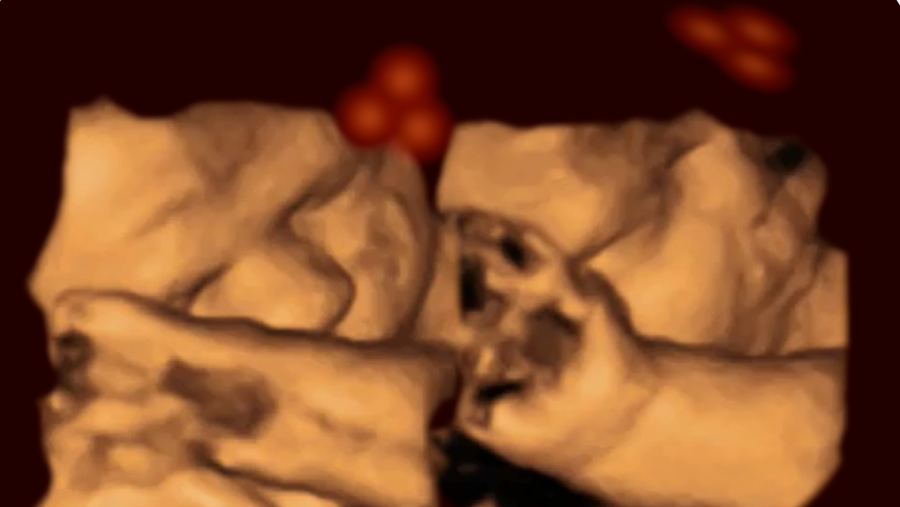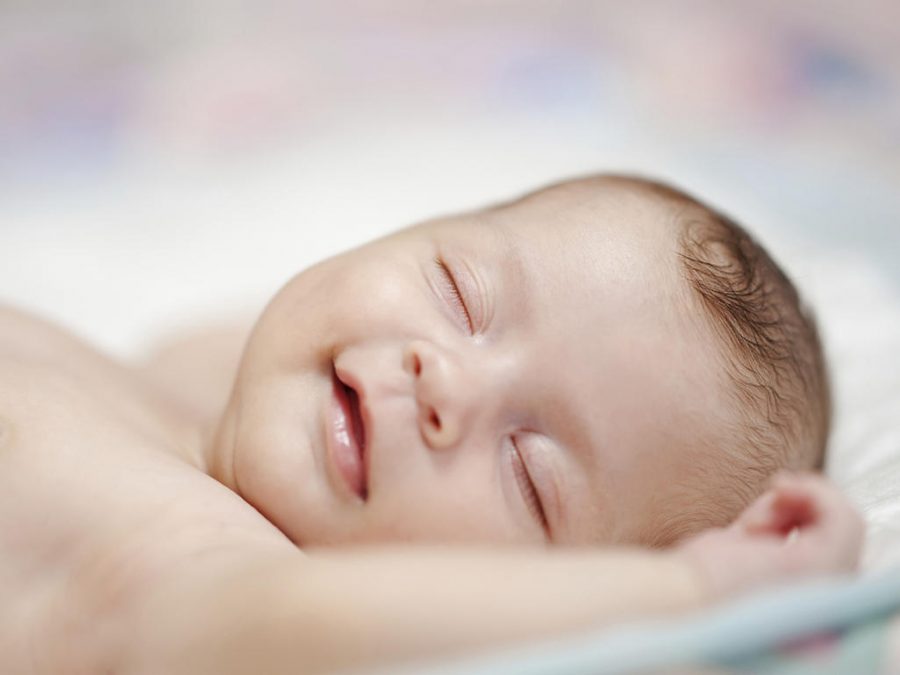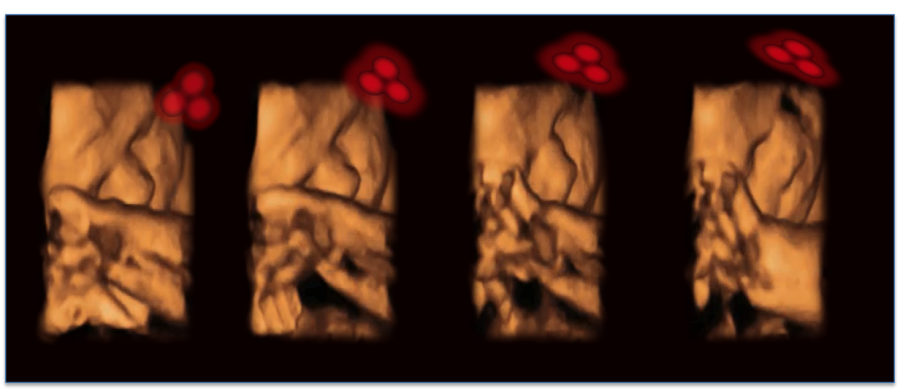A new study suggests that fetuses respond to face-like patterns while they’re in the womb. Researchers showed images to babies in the womb and found that they responded to face-like patterns.
It is dark in the womb, but not so much that babies aren’t able to see anything. Human flesh isn’t completely opaque, so some measure of light can pass through it; which means that even an enclosed space like a womb can be surprisingly bright. The study was led by scientists from the University of Lancaster and it was published on Thursday in the journal Current Biology.

Researchers showed red dot patterns to fetuses and saw they preferred face-like patterns
Vincent Reid from the University of Lancaster, and lead author of the new study explained that what fetuses experience inside the womb is similar to being in a room where the lights are off and the curtains are drawn, but it’s bright outside, meaning, there’s still enough light to see easily.
To find out exactly what do fetuses see inside the uterus, Reid shone patterns of red dots into the wombs of women in their third trimester of pregnancy and monitored the babies using high-definition ultrasound. The researchers looked at how the babies turned around when they showed them the red dots. In doing so, they discovered that fetuses have a preference for dots arranged in a face-like pattern, just as newborn babies do.
“This is the first time that anyone’s been able to deliver an image to a fetus,” said Reid, according to The Atlantic.
He believes the findings will allow scientists to study the mental abilities of humans at the earliest stage of our development before we are even born.
Scientists have known that third-trimester fetuses can perceive sounds and other stimuli while still in the womb. For instance, in 1980 two researchers, Anthony DeCasper and William Fifer, asked pregnant women to read The Cat in the Hat to their babies, over and over again for the last seven weeks of their pregnancies. They noted that the babies could then choose to hear a recording of either The Cat in the Hat or a different children’s story, by sucking at different times. The babies in the study preferred The Cat in the Hat.
“People showed that a fetus could learn, was aware of elements of language, and preferred its mother’s own voice,” said Reid, according to The Atlantic.
Fetuses would track movement of face-like patterns shown to them
Although many studies focused on hearing, touch, taste, and balance, vision was somehow overlooked in most cases. Some researchers have studied how newborns see the world, but most thought that there was no way of conducting similar tests before babies were born.
The new study proves otherwise. Reid and his colleagues replicated studies that have been carried out with infants since the 1960s, showing that fetuses prefer to look at human faces over all other kinds of images. They noted that the preference is so strong that even a vaguely face-like image will capture their attention.

The researchers created a mathematical model that predicted how light passed through a mother’s tissue and also predicted what different images would look like to a fetus. Then, they used the model to calibrate two images: an upright triangle of red dots and an inverted triangle. They shone both patterns into the bellies of 39 pregnant women, and then slowly moved the lights to the side. Using ultrasound, they noticed that as they moved the lights to the side, the fetuses would turn their heads.
Reid noted that they didn’t always move, though. The fetuses were more likely to track the movement of the upright face-like triangle than the inverted one, showing the same patterns you would find in newborn babies.
“This tells us that the fetus isn’t a passive processor of environmental information,” said Reid. “It’s an active responder.”
Researchers want to prove now if fetuses have a number sense
The findings also confirm that the preference for faces isn’t the result of experiences that happen after birth. Some researchers have suggested that babies imprint on the first things they see, which is often their mother’s face.
Testing that theory is very hard because if imprinting does happen, it would be highly unethical to deprive a baby of that stimulus. However, Reid noted that their study rules that theory out, as the preference already exists while babies are in the womb.

A fetus’s eyelids unfuse sometime between 20 and 24 weeks into gestation, when it’s upright in the womb. It can see from that moment, and what it sees depends on how the light is bent, distorted, or blocked by the mother’s body. Reid believes those patterns of light could have an impact on the development of the fetus’s eye and brain, making the upper half of their visual field more sensitive. He noted that would potentially create a bias toward top-heavy, face-like shapes.
Reid explained that it is just a theory of his, but one he’s finally able to test. The researchers are now studying if fetuses share other infant biases, and they also plan to check if they have a number sense, meaning if they can tell the difference in varying quantities of dots. He noted that if they’re able to prove that, they would be talking about fetal cognition, which would be a whole new “ballgame” for developmental science.
Source: The Atlantic
